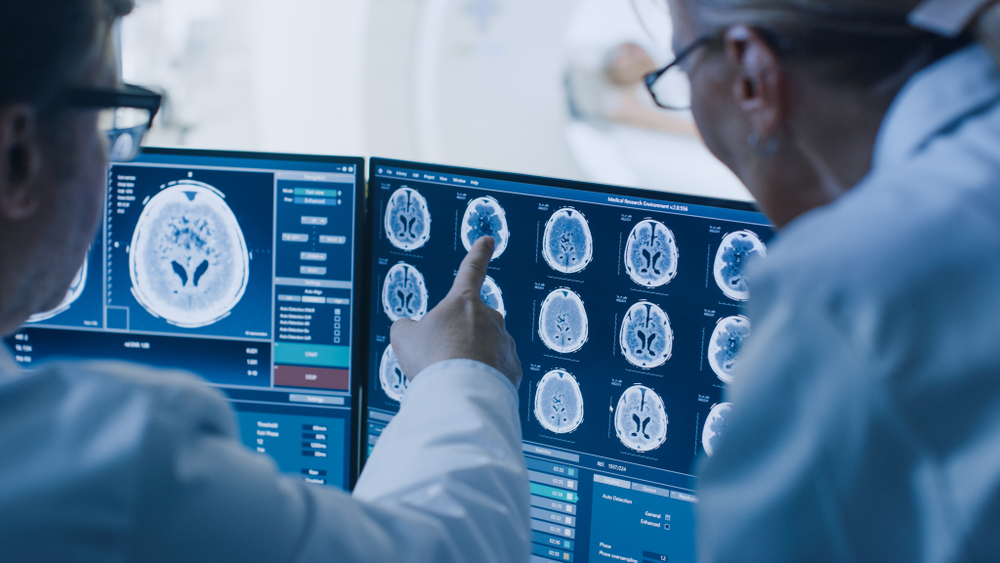What's the problem?
Mental health disorders are characterised by clinically significant disturbances in an individual’s cognition, emotional regulation or behaviour, and in 2019 one in every 8 people were living with one. There are many mental health disorders, from neurodevelopmental ones to schizophrenia and depression, and mental disorders are also associated with substantially reduced life expectancy.
While many physical diseases are diagnosed and treated based on biological tests (for example, an electrocardiogram for heart disease), mental health disorders are usually diagnosed based on their symptoms alone. Our understanding of what happens at molecular, cellular and circuit level in the brain remains incomplete – two people may present with similar symptoms but if the underlying cause is different at the molecular level, then a treatment might work well in one but not the other. To complicate matters, people with one mental health disorder often develop other types, which makes diagnosis, treatment and management more challenging.
What are we doing about it?
IHI and IMI research is digging deep into the depths of the brain, using digital innovations and data analysis to unlock the biological reasons behind mental health disorders and find better ways to monitor changes in these conditions. This may lead to better diagnoses, improved management strategies and more targeted and effective interventions. The brain is still one of the least understood organs in the body, and public-private partnerships can connect the best minds from industry and academia to make breakthroughs in this highly complex field. Most importantly they provide a platform to work with people with mental health disorders so that researchers can meaningfully tackle what matters most to them. By learning more about the biological basis of these diseases, developing new diagnostic methods and trying to understand the variations in symptoms between individuals, IHI and IMI research aims to foster better outcomes for people with mental health disorders. IMI launched important initiatives to address this and, as part of its third call, IHI funded the project SASICU to tackle mental health issues associated with intensive care.
IHI / IMI research is...
|
…studying brain biology to find clusters of patients to design better targeted treatments |
The underlying biological basis of disorders like schizophrenia, depression and more are poorly understood. The PRISM project probed the brains of diagnosed schizophrenic and dementia patients using novel technologies and found brand-new clusters could be detected based on the underlying brain biology, independent from the original diagnosis. PRISM2 is now extending this result to depression. The AIMS2TRIALS team found that a signature of brain activity related to processing faces (called N170) could be used to segregate subgroups of people with autism (ASD). Clustering patients into better defined subgroups is important as it will ultimately boost understanding of these disorders and pave the way towards more targeted, improved treatments. |
||
| …measuring changes in behaviour as symptoms |
|
||
| …examining how environmental factors are linked to mental health |
|
||
| …harnessing consumer tech to improve diagnostics |
|
||
| …identifying, qualifying and validating biomarkers | The EU-AIMS project was the first academic/industry group to submit a proposal for potential autism biomarkers and obtain qualification advice from the European Medicines Agency (EMA). The project and the EMA subsequently published a peer-reviewed paper in Nature Reviews Drug Discovery on the identification and validation of biomarkers for autism. The PRISM2 project is currently in talks with the European Medicines Agency about qualifying digital biomarkers from smartphone data to better distinguish mental health disorders, and they have run a clinical study that will help to validate both digital and neurobiological biomarkers for social dysfunction in schizophrenia, Alzheimer’s disease and major depressive disorder. | ||
| …improving the tools that are used to measure and study mental health disorders | RADAR-CNS developed the RADAR-BASE, an open-source platform which enables collection of near real time remote monitoring of participant’s actively and passively generated data, collected via Android and iOS apps. PRISM used a suite of tests for schizophrenia and Alzheimer’s disease – including scans, blood tests and smartphone monitoring – to better understand the biology of these conditions and indicate the brain mechanisms involved, which in turn could make diagnosis easier and identify targets for new treatments. NEWMEDS produced standardised, more accurate and predictive animal and human models, including positron emission tomography (PET) and functional magnetic resonance imaging (fMRI) based tools and models, that are helping to develop new and better treatments for schizophrenia and depression. | ||
| …investigating sex-based differences in mental health patients | An AIMS2TRIALS study revealed that women with autism showed structural differences in brain features that are not seen in men with autism nor in men without autism. Sex-based differences seen in autism are still not well understood, and women are often diagnosed late, or not at all. | ||
| …creating networks of clinical trials, research sites and communities | The EU-AIMS project set up a European Clinical Trials Network for autism including over 118 clinical and research sites across 37 European countries. AIMS-2-TRIALS is continuing that work by making the clinical trial network global and expanding its scope. PRISM fostered a network of pre-clinical research sites that can perform high-quality studies on social dysfunction in mental health disorders. | ||
| …engaging people with mental health disorders | The AIMS-2-TRIALS project is the likely the first large-scale consortium to invite a group of people with autism and their carers to get involved across the entire project. AIMS-2-TRIALS set up eight working groups made up of ‘A-Reps’ and researchers and they meet regularly to get input on different aspects of the project and jointly agree on the path ahead. | ||
| …forming new databases | The EU-AIMS and AIMS2TRIALS projects developed a large autism database with anonymised and harmonised data which is one of the biggest of its kind. In the NEWMEDS project, the largest known database of studies on schizophrenia was created, including information on over 23 000 patients from 67 studies in over 25 countries. |

